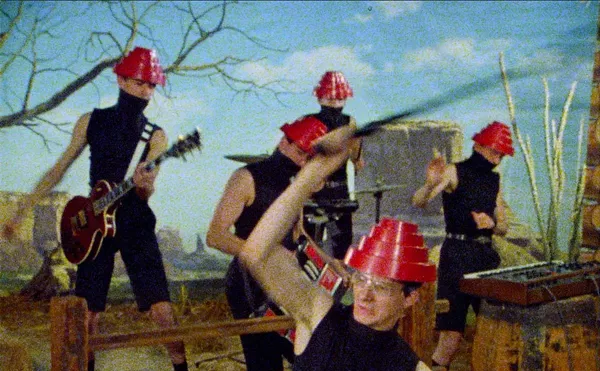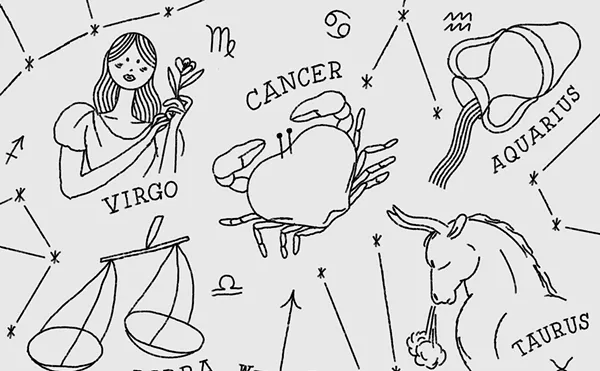Kind of Blue is a consensus jazz masterpiece, something that everybody can agree on. As with Citizen Kane, if you claim not to like it you’re either clueless or trying to be difficult. People who may find early Miles too abstract or later Miles too rowdy like it. People who are not particularly fond of jazz like it. Hell, some people who are not particularly fond of jazz love it. This is important to note, since only some masterpieces are loved, let alone genuinely liked. Kind of Blue is also the coolest album ever made.
The concept of cool is one of the subjects broached in Ashley Kahn’s brief but thorough accounting of the early 1959 recording sessions which produced trumpeter Davis’ most cherished artifact — the book also sketches in Miles’ prior career and the influential aftermath of the album’s release. Cool, of course, is a musical style, usually traced back to tenor saxophonist Lester Young, a light and lyrical way of playing which strives for maximum expressiveness with a minimum of emotional heat (hence “cool”). But it’s also an attitude, a stance of feigned indifference, one of several possible responses to the chaotic, post-WW II age.
Trombonist Mike Zwerin, quoted by Kahn, captures its essence when he talks of the time that Miles approached him in the late ’40s about playing on a session which would become part of the famous Birth of the Cool sides (another masterpiece, though less-often loved). Zwerin was finishing a gig at the time:
“I noticed Miles standing in a dark corner ... Miles always seemed to be standing in dark corners. He came over as I packed up around 3. I slunk into a cool slouch. I use to practice cool slouches. We were both wearing shades. No eyes to be seen. ‘You got eyes to make a rehearsal tomorrow?’ Miles asked me. ‘I guess so.’ I acted as though I didn’t give a shit for his stupid rehearsal. ‘Nola’s (Studio). Four.’ Miles made it absolutely clear that he could not care less if I showed up or not.”
By the time of the Kind of Blue sessions, the protocols of cool had relaxed considerably, though not entirely, and one of the small revelations of Kahn’s book is how banal and workmanlike the between-take talk is (or at least that small amount of talk caught on tape). No cries of “eureka” accompany these landmark discoveries — it’s just another gig, though maybe a bit more challenging than most. The only emotional moments are the giddy feelings of relief expressed after making it through complete takes of “So What” and “All Blues.”
But any masterpiece is also a mystery, something more than its creator (or creators) intended, and at the core of Kind of Blue’s magic is the confluence of modality and four idiosyncratic musical minds. Kahn gives a good thumbnail sketch of what modality is, of how modes, or scales used as a basis for improvisation, free the player from the strictures of chord changes and create the kind of free-floating ambience which gives the album its signature mood. Modality had been hanging in the air for a decade and Miles himself had already explored it (most famously on his composition “Milestones”), but Kind of Blue was its fullest flowering, then and now.
The lineup which accompanied Miles on the two sessions which produced the record was composed of Cannonball Adderley, alto sax; John Coltrane, tenor sax; Bill Evans (and on one cut Wynton Kelly), piano; Paul Chambers, bass; and Jimmy Cobb, drums. With all due props to Chambers, Cobb and Kelly, it’s the way the four main players break down into complementary camps that makes a record which could have been merely (though exceedingly) mellow crackle with conflicting intentions.
On the one side, Davis and Evans are the archminimalists, the two most simpatico to the modal ethos, to the idea of using space, understatement and epigrammatic lyricism to infer emotional content. Part of the beauty of Miles’ playing, especially, is the way his restraint implies tumultuous depths of feeling. On the other side are Adderley, who can be extremely graceful but was an uninhibitedly joyful player, and Coltrane, who’s as about as cool as a volcano that’s ready to pop. So despite the date’s overall coherent mood, the colors keep shifting; now brooding, now exuberant, now something else.
If you want more details, Kahn’s book is highly recommended — though if you’re not familiar with the album you might want to buy it first and obsess over it for a few decades. That may sound daunting, but once you’ve heard it you won’t have much choice.
Richard C. Walls writes about the arts for the Metro Times. E-mail him at [email protected].






